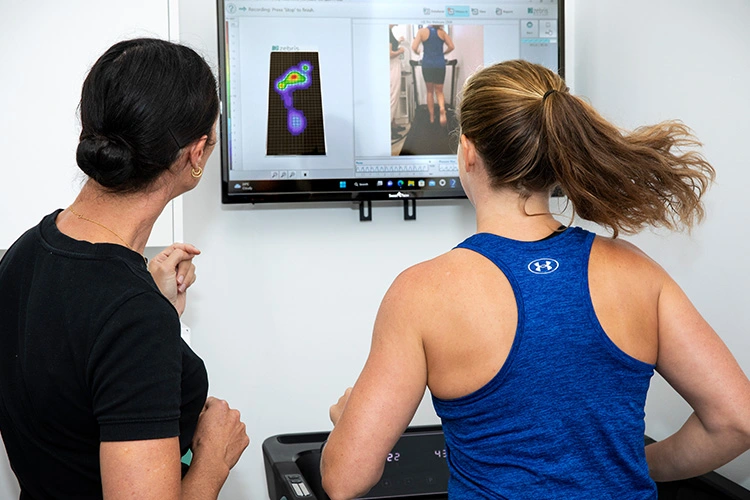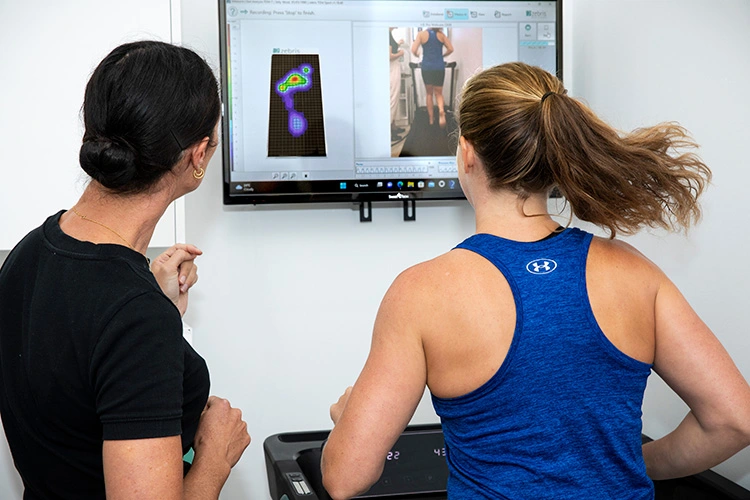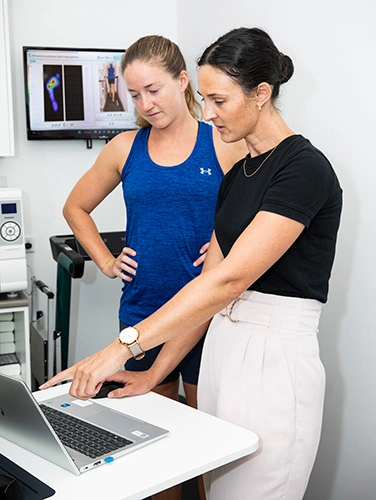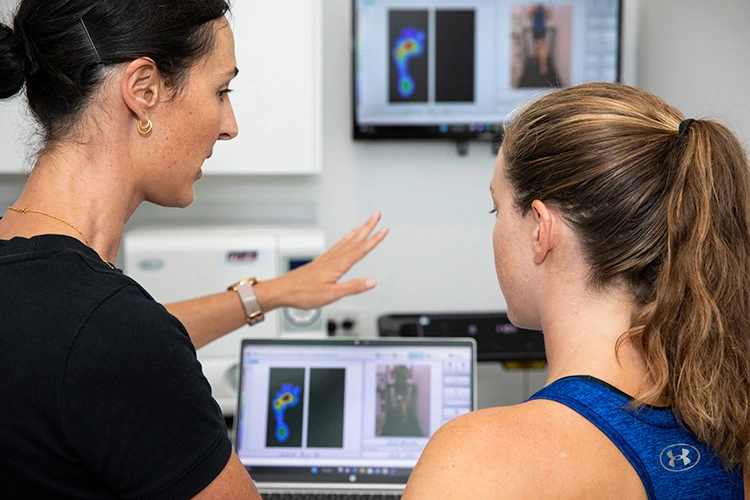When paired with specific podiatric joint and muscle testing, we’re given the complete picture of what’s going wrong in your unique circumstances – and the best way to fix it. Here at HK Podiatry, we collect this information through a comprehensive, all-inclusive exam called a biomechanical assessment.
Biomechanical Foot & Leg Assessment

The way your feet, ankles and legs move together when you walk or run provides our podiatrists with the greatest insights into any problems or dysfunction that can lead to pain, suboptimal sports performance, and many other issues.
Superior Biomechanical Exams
Given the results of your biomechanical assessment are a key factor in guiding your treatment and management plan, it’s important to ensure the most accurate results and that a wide range of information is collected. With a commitment to innovative technology and superior results for our patients, one of the ways that we achieve this is using the Zebris gait analysis system.
Zebris revolutionises the data that is able to be collected from the treadmill gait analysis portion of your biomechanical exam. Used by world-class athletes internationally, it contains over 7,000 calibrated pressure sensors that analyse every aspect of your gait, with every step you take. Paired with high-speed cameras streaming from several angles, it gives our podiatry team more information about your gait and lower limbs than we’ve ever been able to access previously.
Your podiatrist will run through all of the results and information, and what it means for your foot concerns and goals – whether you’re experiencing ongoing foot pain, you’ve noticed changes like bunions developing, you feel a block in your sports performance, you’re training for a triathlon – or something else.
What Happens During A Biomechanical Assessment?
Our biomechanical assessments combine both generalised foot and lower limb testing techniques, as well as targeted testing based on your specific pain or concern. Typically, this will include:
- Understanding your full medical history as well as your current symptoms and concerns
- Muscle strength and flexibility testing, including identifying muscle imbalances
- Joint range of motion testing to understand any restrictions and limitations that may be acting on your gait and function
- Foot posture testing
- Palpation of any tender structures to identify exactly which structures have been damaged
- Video gait analysis with Zebris, which includes pressure plate testing due to its in-built function
- Footwear assessment
Following your assessment, your podiatrist will discuss all of your results, and explain the connection between the signs and symptoms we’re seeing, and what you’re experiencing. This is often a big ‘aha!’ light bulb moment for many of our patients. We’ll then discuss your treatment options, and decide on a plan together of what will be best for you given your personal preferences, lifestyle and goals for your care. Your podiatrist will stay with you throughout your treatment, and may regularly update your plan based on the results you’re getting, to help keep you on the best track.
FAQs
What should I bring with me to my biomechanical assessment?
If you’ve had any previous x-rays, ultrasounds or other medical imaging, please bring this for your podiatrist to review. Other than this, make sure you’re wearing loose clothing for your assessment that is treadmill-friendly, and bring in the two pairs of shoes you wear most often – one casual pair and the other being your sports pair.
How long does a biomechanical assessment take?
Your booked appointment time is 40 minutes. This includes your consultation, assessment, and management plan discussions.
How do I know if I need a biomechanical assessment?
Your podiatrist will let you know. If you’re experiencing foot, ankle, leg or knee pain that is unrelated to skin or nail problems (like ingrown toenails, corns, calluses, warts etc), then it’s likely you will have a biomechanical assessment to give us a complete picture of what’s going on and why.
Is a biomechanical assessment painful?
Not at all. If you currently experience foot pain, there may be a slight amount of tenderness when your podiatrist is palpating around the tender area to confirm the damaged structures, but we take great care to be gentle and considerate at all times.
How fast will the treadmill go? Am I expected to run?
We have full control over the speed of the Zebris treadmill during your gait analysis, so always keep it at a level you are comfortable with and that is easily manageable for you given your symptoms. If you are a runner wanting to improve your running performance, then yes, we will ask you to run as part of your assessment (unless you’re unable to due to pain).
Can I use my private health insurance to pay for my biomechanical assessment?
If you have podiatry cover with your private health fund, then you may be able to do an on the spot HICAPS rebate for your appointment, depending on your level of cover. While we have HICAPS available, whether this is successful and your rebate amount is dependent entirely on your private health insurer, so if you’re unsure, please check with them before your appointment.
Need professional, knowledgeable care for your feet?
Book your appointment online or contact us today.




